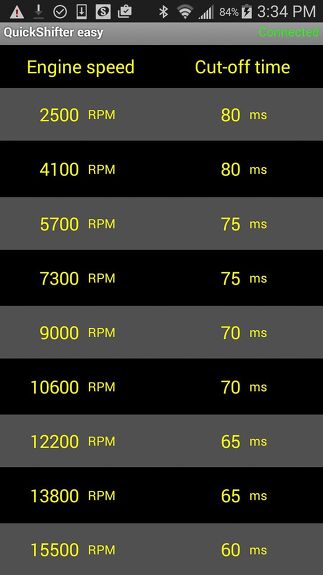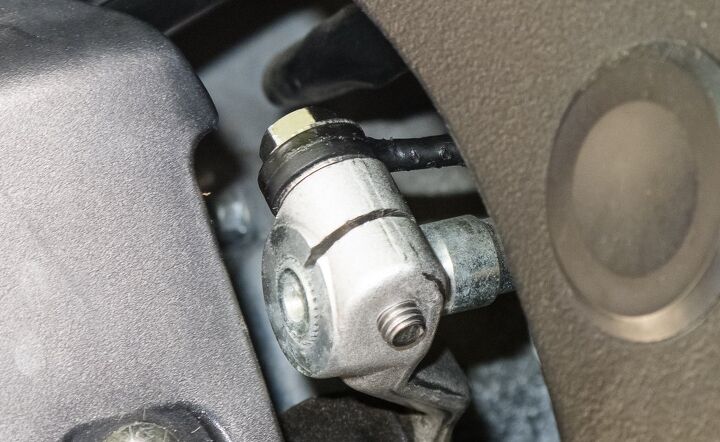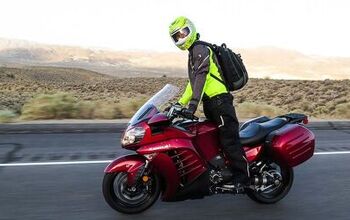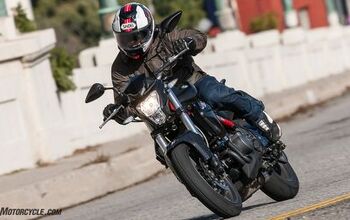MO Tested: HealTech Quick Shifter Easy

A Quick Shifter for the Masses
For those of us who own older sportbikes but don’t usually feel the need to keep up in the unending performance wars (after all, many bikes exceeded necessary streetable power years ago), the march of technology still gives us other temptations for updating to more current bikes. These days, it often feels like all of the new bikes come with cool electronic trickery that makes riding easier – and cooler. A quick shifter is an item that drastically increases the fun factor of performance riding. Yeah, they help shave fractions of seconds off lap times, but the real fun for most street riders is the sound of a full-throttle upshift – or three – as they rocket down the entrance ramp or along a remote mountain road.
Blue Monkey To Distribute HealTech Quick Shifter
Ten years ago, I installed a Techtronics quick shifter on my 2003 R6. While it was fun at full zoot on the track, where I could run the bike out to redline repeatedly, the mechanical nature of the unit meant that it could only be dialed in to have the ignition cut-out effectively at a set rpm range. So, the system became less and less effective as the engine speed moved away from that set range. Electronic quick shifters perform the same task of cutting-out the ignition or fuel injection briefly to allow the transmission to change gears, but they also enable the duration of the cut-out to vary based on engine speed, meaning that they appoint themselves to the wider shifting conditions encountered by street riders.
So, imagine my excitement when I learned of the HealTech Quick Shifter Easy and its rpm-based, tunable cut-out durations. Next, consider how stoked I was to see that a wide swath of current and older, fuel injected sporting (and non-sporting) machinery was covered in the applications list – including my 12 year-old R6!
The HealTech Quick Shifter Easy (QSE) comes in two variations, which cut either the ignition or the fuel injectors based on the ease of installation for the end user among other reasons. The QSE kit consists of a surprisingly small control module, a motorcycle model-specific wiring harness, and a strain gauge. While the harness hooks the QSE to the bike and provides the power, the magic takes place between the strain gauge and the module. Unlike other quick shifters that require large sensors on the shift rod, the QSE’s strain gauge is small enough and so sensitive that it can be mounted in several places. While the preferred location is between a lock nut and the shift rod, this only works on bikes where the rod is pushed to upshift. On my R6, the rod is pulled, so the strain gauge only registers an increase in strain when the return spring is moving the shifter back into its standby position. In the case of my R6, the strain gauge mounted to the bolt that secures the shift arm to the shift shaft.
The QSE module is powered by either the fuel injection or the ignition systems. Since the QSE’s wire harness is bike model-specific, you’ll spend more time uncovering the injectors or coils and buttoning things back up than actually installing the QSE. For my R6, I simply unplugged the factory harness from each injector and connected the QSE’s paired jumpers. Then the harness needs to be zip tied in place and the module needs to be secured to the chassis. One nice feature of the QSE’s construction is that should the module ever fail, an included jumper can be attached to the module end of the harness, taking the module out of the system to allow your bike to continue functioning.
Installing the strain gauge is also dead simple, but you need to pay attention to one thing. The cone shaped washers need to have the cone facing the strain gauge. I dropped one as I was installing the gauge and just slipped it back on the bolt without looking. When it came time to test the system, it didn’t work very well. Discovering and rectifying my mistake instantly changed the accuracy of the upshifts.
Once the QSE is installed on a bike, it is adjustable via Bluetooth and an Android phone app. Firmware updates are also applied via this Bluetooth connection. Sorry iOS users (like myself), an app is not yet available, but HealTech has assured me that one is in the works. On a borrowed Android phone, I found the QSE extremely easy to set up. Once paired with the phone, the app displays all of the cut-off times and their rpm ranges which can be adjusted with a simple tap on the rpm in the listing. In the setup screen, the rpm is displayed, and the number of pulses per revolution can be adjusted to reflect an accurate rpm. The first and last rpm that the QSE will cut-out the engine can easily be set from here with a pair of sliders.
The biggest reason to visit this screen is to set the sensitivity of the strain gauge. Bikes that have the gauge mounted on the shift rod will need to increase the sensor threshold setting to prevent false cut-outs. Since the forces read in other mounting locations (such as on the shift arm on my R6) can be significantly lower, the sensitivity must be increased by moving the slider to the low end of the scale.
The ability for the QSE to cut-out the engine power when the rpm are dropping can be toggled off from here, allowing for clutchless downshifts on some strain gauge installations (mostly those not on the shift rod). Also, if you’re troubleshooting your setup, a button to test the cut-out feature allows you to check if the module is functioning. After changing your settings, don’t forget to upload the changes to the QSE module, or they’ll disappear when the connection is closed.
My experience of the HealTech QSE is one of pure simplicity of operation – once I found my mistake on installation. The first time I tested the QSE out, I thought I was just going around the block to make sure it was working, but I ended up taking a 20 minute ride just for the sheer joy of shifting my R6 the way I’ve been shifting many of the latest bikes.
The custom fit of the QSE harness means that the most challenging part of the install is removing the tank and deciding where to zip tie the wires. Even a novice mechanic should be able to handle this install. Adjusting the settings via Bluetooth is simple, and I credit being able to adjust the threshold of sensitivity based on the app’s display of the force read when lifting the shifter. Set the number lower than the one regularly displayed, and you’re good to go. I played with the duration of the cut-out on lower rpm shifts, but ultimately, ended up with the settings roughly where they started from the factory. Still, this is a nice feature to have at your disposal.
The ability to downshift clutchlessly is, to me, of dubious merit. I quickly returned to using my clutch while I modulated the throttle. (Perhaps having a BMW R1200 R with its Shift Assist Pro in my garage and seeing how silky smooth it handles clutchless downshifts influenced my feelings.) One feature I didn’t get to test, but feel is notable for those who own multiple bikes, the QSE app has the ability to save multiple profiles. So, if you have two bikes, you could install a harness in each bike and swap the QSE between the two, uploading the appropriate settings to the QSE for the bike it is currently on.
The HealTech Quick Shifter Easy lives up to its name, and it will bring a smile to your face as you run through the gears, hearing the exhaust note seamlessly change as you snick through the gears. Blue Monkey Motorsports handles the U.S. distribution for the QSE, selling it for $320. The current list of motorcycle applications is updated as new models are added.

Like most of the best happenings in his life, Evans stumbled into his motojournalism career. While on his way to a planned life in academia, he applied for a job at a motorcycle magazine, thinking he’d get the opportunity to write some freelance articles. Instead, he was offered a full-time job in which he discovered he could actually get paid to ride other people’s motorcycles – and he’s never looked back. Over the 25 years he’s been in the motorcycle industry, Evans has written two books, 101 Sportbike Performance Projects and How to Modify Your Metric Cruiser, and has ridden just about every production motorcycle manufactured. Evans has a deep love of motorcycles and believes they are a force for good in the world.
More by Evans Brasfield









































Comments
Join the conversation
Hi Guys just wanted to know if it helps shift both ways that is upshift and downshift. I am planning on installing it on my KTM Duke 390 2013
Thanks for this review. I'm in the market for a quickshifter, stumbled upon this one but haven't seen many reviews on it.